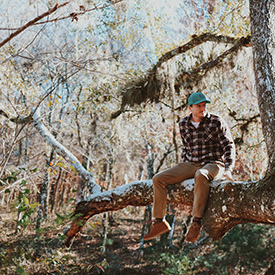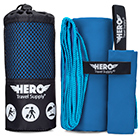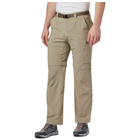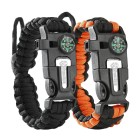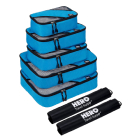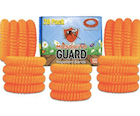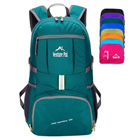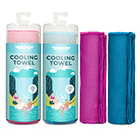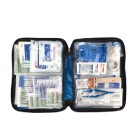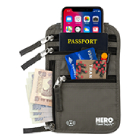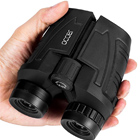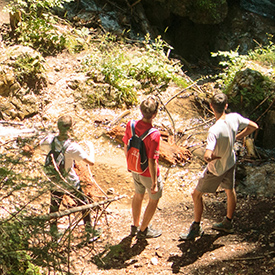There is no end to what kinds of events you can plan for yourself on your cabin trip. Whether you are getting away for a long weekend or vacationing for weeks at a time, you are going to want to be prepared for the elements as well as any spontaneous adventures you find yourself on.
Should you choose to go on a hike out in the natural elements surrounding your cabin, comfortable clothing is a must. Proper footwear, lightweight shirts, breathable pants, and protective sun gear will ensure that you stay safe and dry as you traverse the footpaths and trails.
If you opt for a cabin on or near a lake, the essentials will include a bathing suit, personal floatation device, beach towel, and other waterproof clothing. Enjoy a dip in the lake or an afternoon in a kayak without the fear of drudging around in wet, soggy clothing.
In the evenings, there’s nothing like a bonfire to really get cozy. Be sure to pack extra warm clothing, such as a hoodie, some blankets, and comfy pants and socks. For ultimate relaxation with your friends, family, or a loved one, you’ll want to make the most of every moment, day or night.
What Women Should Wear on a Cabin Trip? – (Click to expand)
A stay at the cabin affords you the opportunity to look cute, but also to dress comfortably depending on what your itinerary dictates. If you’re looking more for a trip that is built on rest, relaxation, and perhaps a bit of sight-seeing, then a laid back, summery style is going to work best for you. Walking shoes, a light top, and jeans are the perfect look to traverse the local town. In chillier weather, it never hurts to pile on the layers with an open cardigan, a long-sleeve shirt, and trendy knee-high boots.
If you are more into the athleticism of what a cabin trip can offer you, then utility is going to be the name of the game. Hiking or yoga pants, an athletic tank, and sneakers are a must-have, whether you are going on a day trek, a horseback ride, a paddleboat ride, and more.
Of course, you shouldn’t renege on the accessories: a cute pair of sunglasses and a hat will complete the look.
Below is a sample women’s clothing list. (All items link to Amazon.com for your convenience).
When packing for Portland, clothing items for men and women are very similar. If possible, pack versatile pieces that can be worn multiple times in different ways. This will help keep your suitcase light and you won’t have to worry too much about what to wear each day. Because it can rain quite a bit, the most important thing to bring is a lightweight raincoat. Everything else can be layering pieces such as tank tops, jeans, t-shirts, and shorts, depending on the season.
If visiting during the colder months, swap out those t-shirts for thermals and sweaters, and don’t forget to bring a warm winter coat that can withstand winter conditions (whether it be rain or snow). Beanies, gloves, and scarves are another great way to stay warm all while fitting in with the local attire.
What Men Should Wear on a Cabin Trip? – (Click to expand)
Depending on the season in which you stay at the cabin, your attire is going to be dictated first by the weather, then by the activity. A great thing to keep in mind is that for your trip, you are more than likely going to be switching between outfits, moving from a day on the lake to a breezy outside dinner, or from a peaceful trail hike to a cozy evening bonfire.
Flannel is certainly the material to choose in building your outfits, as it’s lightweight, comfortable, and stylish. Finish off your look with a pair of comfortable jeans, some casual boots, and a hat if it’s chilly.
Below is a sample men’s clothing list. (All items link to Amazon.com for your convenience).
SPRING – March, April, May
Spring, as with any season, is going to look different depending on what area of the country you decide to travel to. A general rule of thumb is to cut the U.S. into two sections horizontally: in the top half, it’s going to be chilly in Spring, with average daily temperatures ranging from 40℉ to 50℉ (4℃ to 10℃). For early morning and afternoon activities, opt for a fleece jacket and a warm hat to keep your body temperature in check.
The bottom half of the U.S. will be slightly warmer, with temperatures ranging from 55℉ to 70℉ (13℃ to 21℃) if you go farther down South. A breezy athletic shirt should allow you to move comfortably through your day. Don’t forget to pack a sun hat and sunscreen!
SUMMER – June, July, August
The highlight of the fall season for a cabin trip is most definitely the cooler temperatures and the colors of the foliage. If you and your cabin buddies or loved one want to peruse the local town, then choose an open front cardigan, jeans, and cute knee-high boots to complete your look.
You’ll also want to accessorize with sunglasses and an infinity scarf in case you stay out later in the evening, when the temperatures start to drop. If doing something more active, then remember to pair your hiking or athletic outfit with some type of a hoodie, which can always be removed if you get hot.
Average daily temperatures in the fall range from 40℉ to 50℉ (4℃ to 10℃), and of course, the more north you go, the colder it gets. The southern states feature temperatures ranging from 55℉ to 70℉ (13℃ to 21℃).
WINTER – December, January, February
Winter at your cabin brings about a new range of activities, such as sledding, skiing, tubing, and more. In order to ensure you don’t catch a cold, it’s important to bring a warm coat, snow pants, and boots to protect your feet.
Accessorize with a warm hat and scarf, and as always, protect your lips with SPF lip balm. You never know how truly bright that sun can be on the white snow!
Average daily temperatures in the winter range from 10℉ to 35℉ (-12℃ to 2℃), and of course, the more north you go, the colder it gets. The southern states feature temperatures ranging from 30℉ to 55℉ (-1℃ to 13℃).
Dressing Appropriately for the Activities on a Cabin Trip – (Click to expand)
Fishing – Weather permitting, you’ll probably be spending copious amounts of time outside during your cabin stay. For those of you who like to fish, there are certain necessities you will want to make sure to pack before you cast out your line. A lightweight set of shirts and pants – quick-dry, if you can find them – will make all the difference. Be sure to choose lighter colors, as well, since you don’t want to attract too much sunlight while you’re on the water.
Speaking of sun protection, you can’t go wrong with a pair of UV protection sunglasses, a floppy hat to conceal your face and the back of your neck, and sunscreen. Proper footwear is also going to be key. A sturdy pair of water shoes will work in your favor, as you’re not going to want to trudge through water in your socks and sneakers.
Kayaking – When kayaking, there is always the risk that you’re going to lose anything that isn’t secured to you, since the pace of the water is not guaranteed to be slow. For this reason, it is recommended that you wear and bring only the essentials: waterproof clothing is the optimal choice if you don’t don a bathing suit. A personal flotation device, which you can easily snap or velcro into place, will give you peace of mind on the water.
If you want to shield yourself from the sun, then try to wear items that have some type of a lanyard attached to them. You can purchase sunglasses that already have it, or you can buy the lanyard separately. A hat is also a great item to take with you if you can secure it under your chin or underneath a ponytail, such as on baseball caps. Make sure you don’t step a toe into the water unless you’ve also applied sunscreen.
Hiking – A good hike is going to be the cherry on top of a great cabin trip. To prepare yourself, you’ll want to have a lightweight daypack to carry with you while you hit the trails. Opt for a warm fleece over a short-sleeved shirt or a tank top, so that you can remove it if the weather heats up on your way. Breathable bottoms, such as shorts or special hiking pants, will also help you with agility in taking on those hills or summits.
Of course, your feet will thank you for choosing the right type of hiking or trail shoes, and let’s not forget a camera to take a picture at the end of your hike!
Bonfire – There is nothing sweeter than a relaxing, warm bonfire to kick off or end your cabin trip. If you’re the roasting marshmallows type of camper or the chat with friends around the fire, you’ll want to be sure you’ve packed the right things. A sweatshirt or pajama shirt will work just fine to guarantee maximum comfort, paired with comfy pants and lightweight outdoor shoes. Opt for slip-on, sandals, or even tennis shoes. For those chillier nights, take a blanket with you to spread across your legs as you bask in the glow of the flames!




